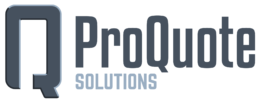Product Configuration – A Simple Approach
Product configuration tools are designed to help a sales team quote multifaceted and complex products. There is a range of products available but many of these systems require a sizeable budget and significant time and resources to implement. One approach that has proven easy to deploy and use is the Base Model approach. This methodology starts with a standard configuration and provides options for substitutions and additions. Rules and constraints ensure the integrity of the final product.
If every item you build is completely different, like a machine shop or custom fabricator, then this approach will likely not work. But for many businesses that sell products and equipment built from a defined list of materials, labor, and components, the Base Model approach can be an effective and low cost solution. Under this methodology, each manufactured unit can be different (custom) and tailored to the specific needs of the customer. The key though, is that the majority of components (BOM) used to make up the equipment is well defined. This approach is suitable for a wide range of manufactured equipment in transportation, construction, oil & energy, plant automation, packaging, chemical processing, medical, mechanical systems and industrial components. It also works well for new home construction, security systems, network and communication products, environment solutions wireless systems, fire prevention equipment and other technology applications.
Base Model
Let’s look at the example of an automatic bulk bagging machine. It comes in a variety of models, sizes and options. In this example, the user would start by entering a few specifications (e.g volume, material, size) supplied by the customer and the program would identify the best product model(s) that could meet the customer’s requirements. By selecting the desired model, the configuration tool automatically loads the base model and all the standard features. In the case of the bagging machine this could include stainless steel frame and panels, programmable logic controller, bag inflation & fill system, electrical control panel, take-away conveyor and several other standard components.
Substitutions
Now that the base system is loaded, the configuration tool can present a series of substitutions (drop down list of one or more) for each standard component. For example, the control panel could be upgraded to a touch screen or the take-away conveyor substituted for higher capacity or different length. With each substitution, the cost and price of the bagger is adjusted to reflect the change. The key is, only permissible substitutes are allowed. A user can’t add a feature that doesn’t belong to the system.
Additions
Likewise, the system can include additions to the standard configuration. This could be a spare parts kit, bag sealer or palletizer attachment. Again, as items are added the cost and price of the system is adjusted. Here again, the configuration rules allow only acceptable additions to be applied.
Custom Items
It would be nice if customers just stayed with the standards and available options, but this is rarely the case for manufactured products and equipment. There is always a need to support new custom requests. Let’s say that the customer needs a custom conveyor system. In this case, the user would select the closest existing option and then edit the product description to fit the requirements. Alternatively, they could add a new item and then modify the component to the custom requirement. At this stage, the quote would be flagged for review and engineering notified of the custom request. Once approved, the quote would be ready to go to the customer.
Getting a quote out the door for manufacturers of configured products can be a challenge. By implementing a simple configuration tool, businesses can streamline the process and shorten the sales cycle, leading to satisfied customers and more orders. This approach also reduces costly errors by ensuring configured systems use only allowable components, but still providing the flexibility to support custom features. When new staff join the team the configuration solution enables them to ramp up faster and contribute more to the business in less time.
In addition to finding the right software, a reliable solution provider with creditable industry experience is also important. To learn how your business can implement a robust sales quoting/CPQ solution, feel free to contact us at ProQuoteInfo@ProQuote-Solutions.com or call 905-403-1198.
